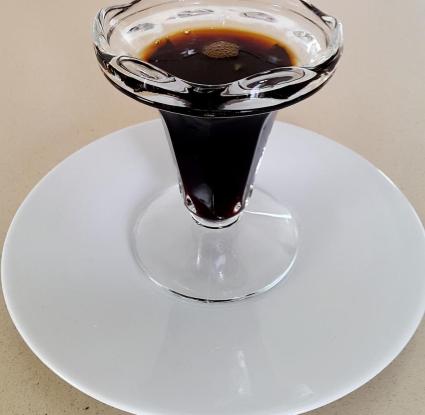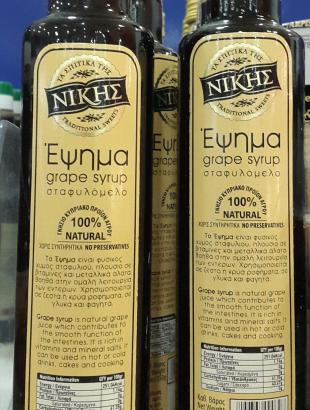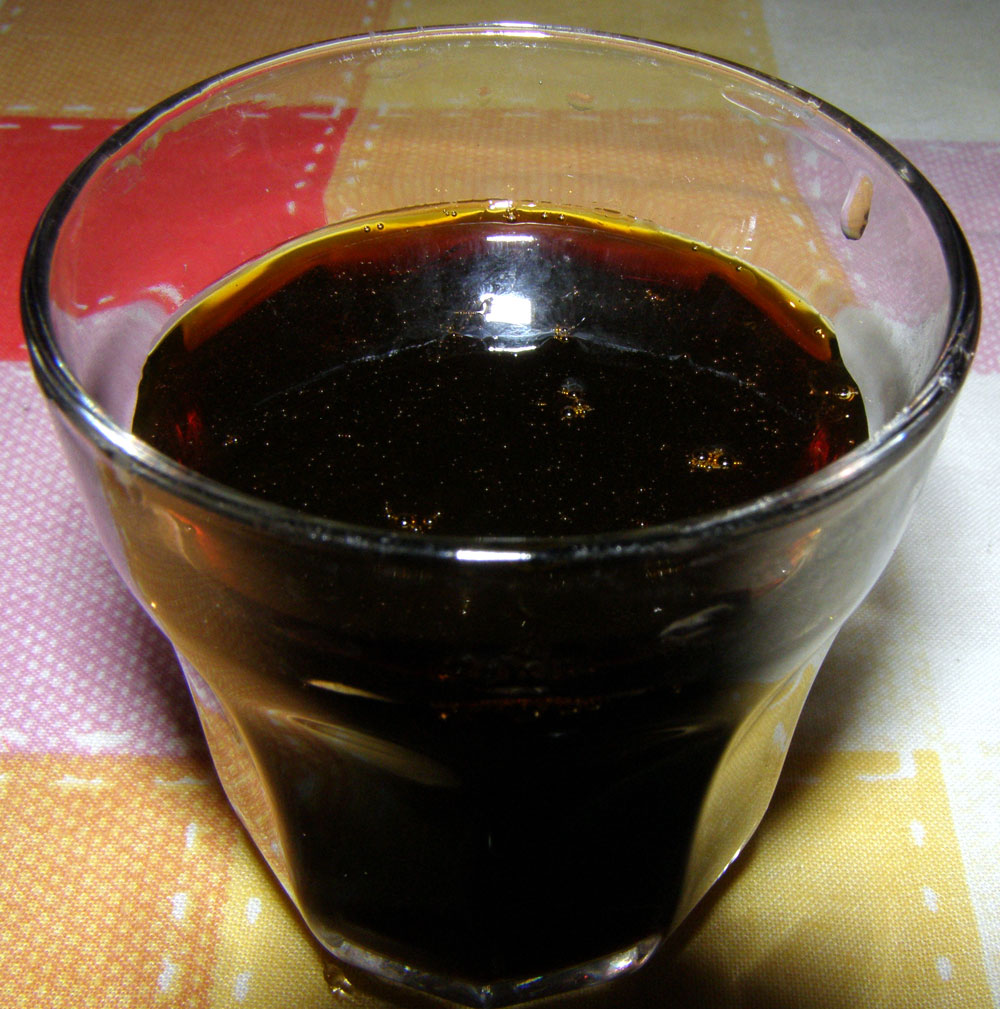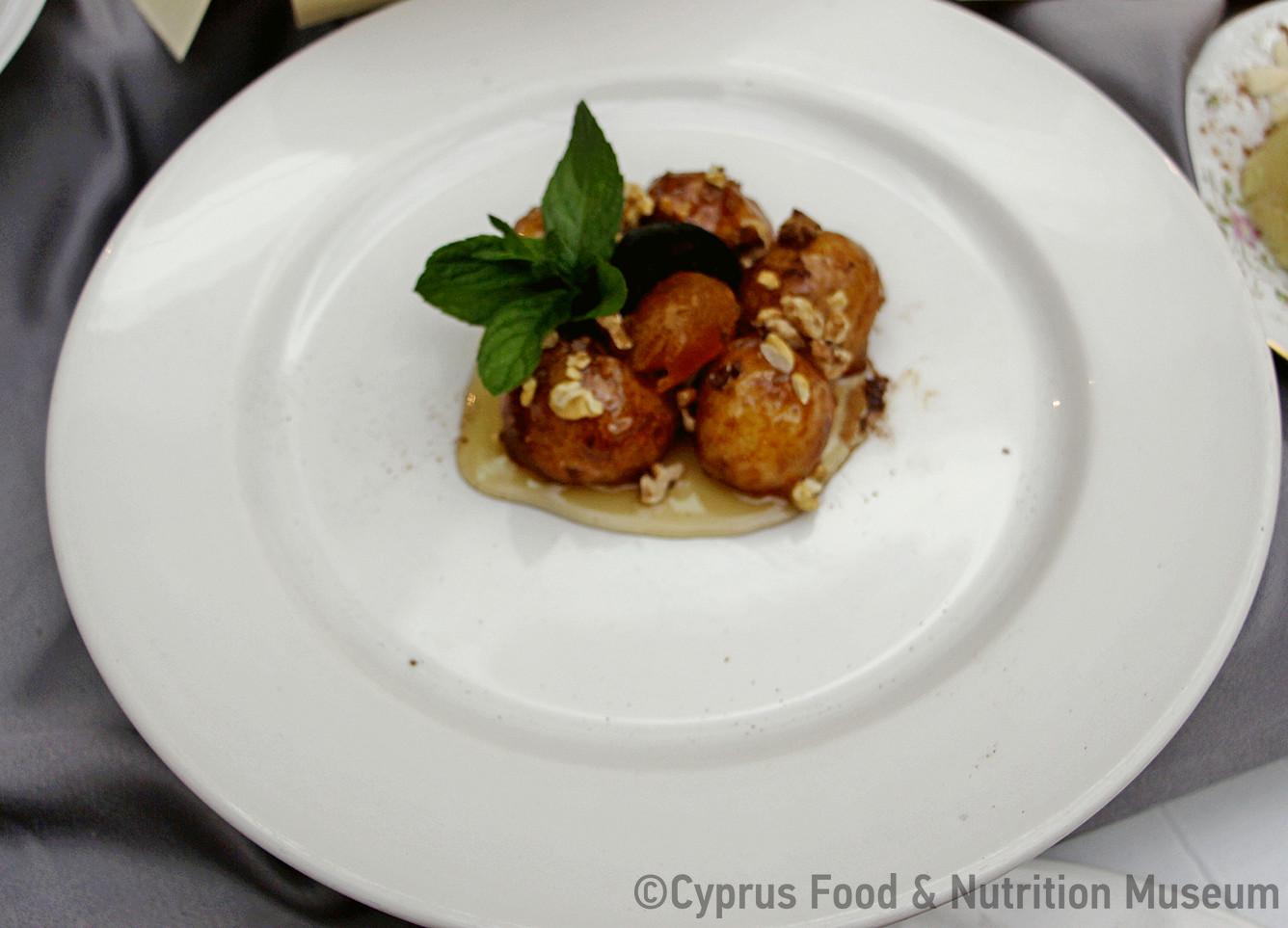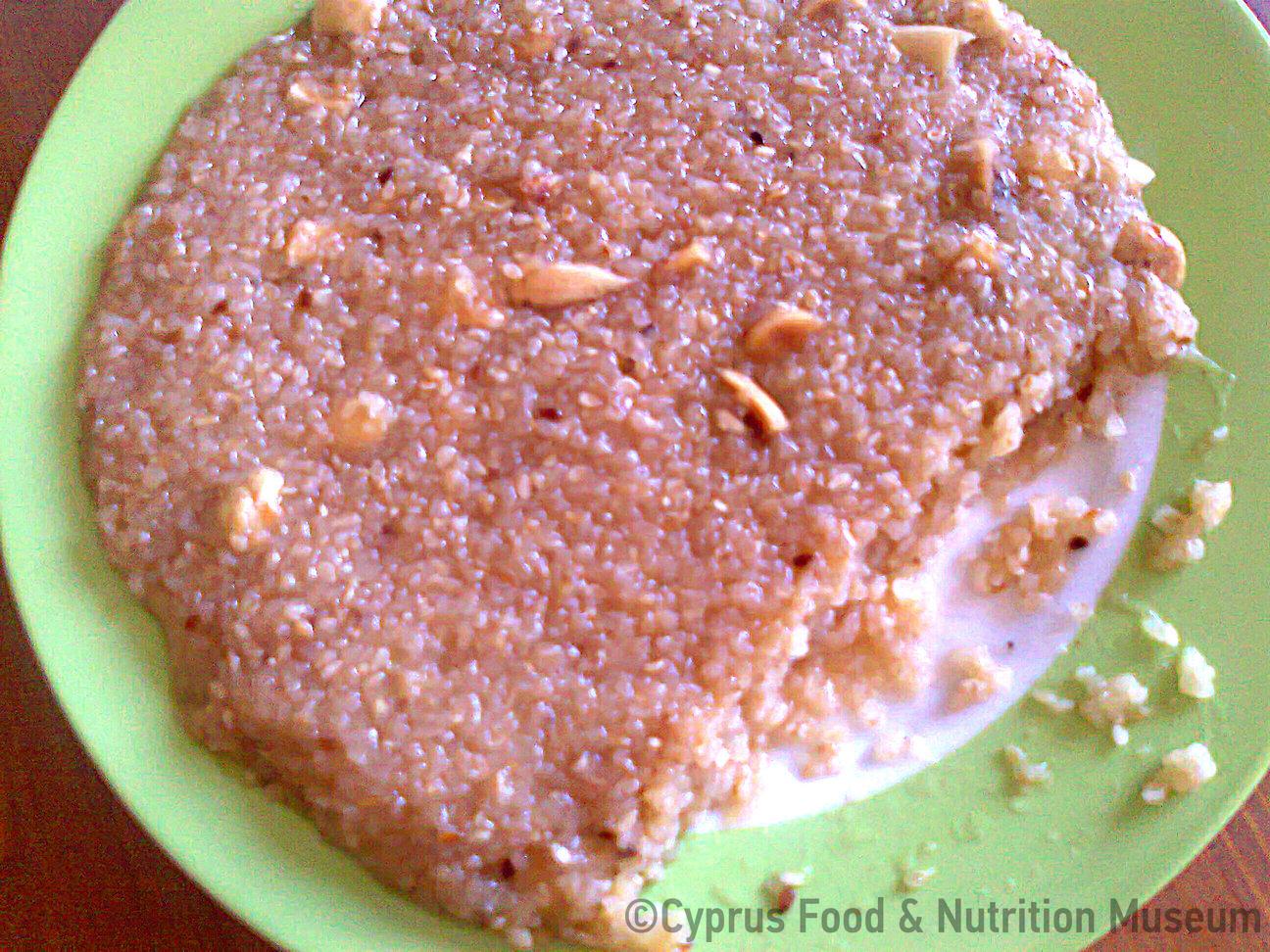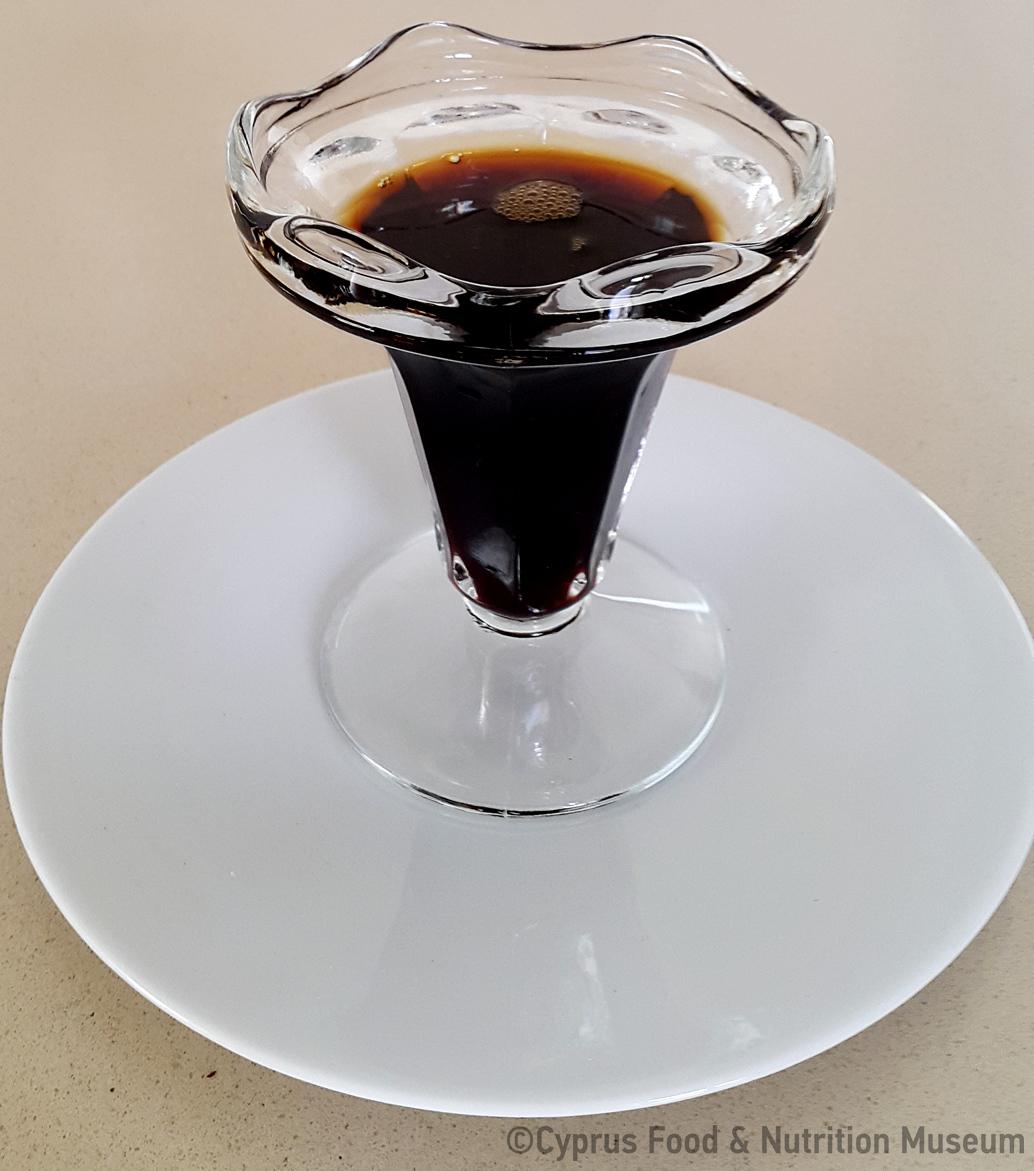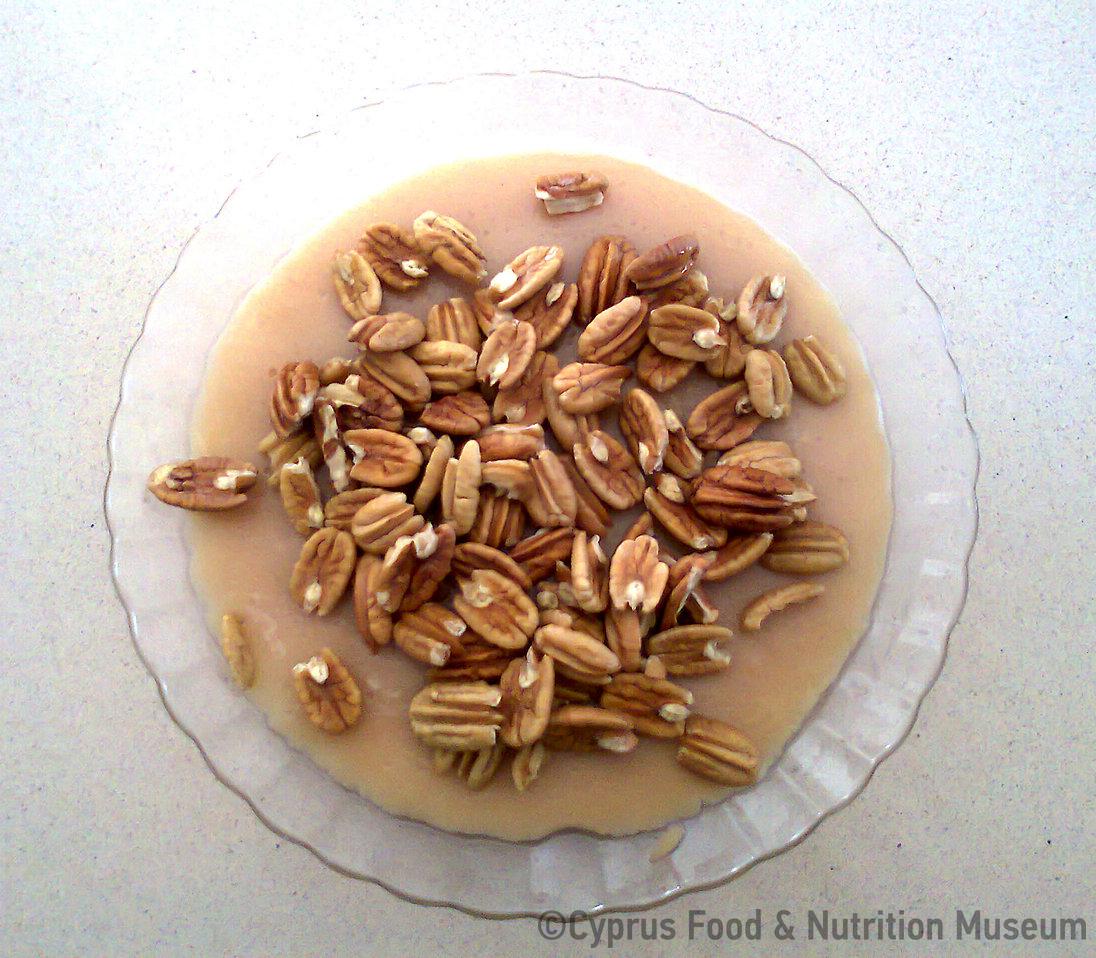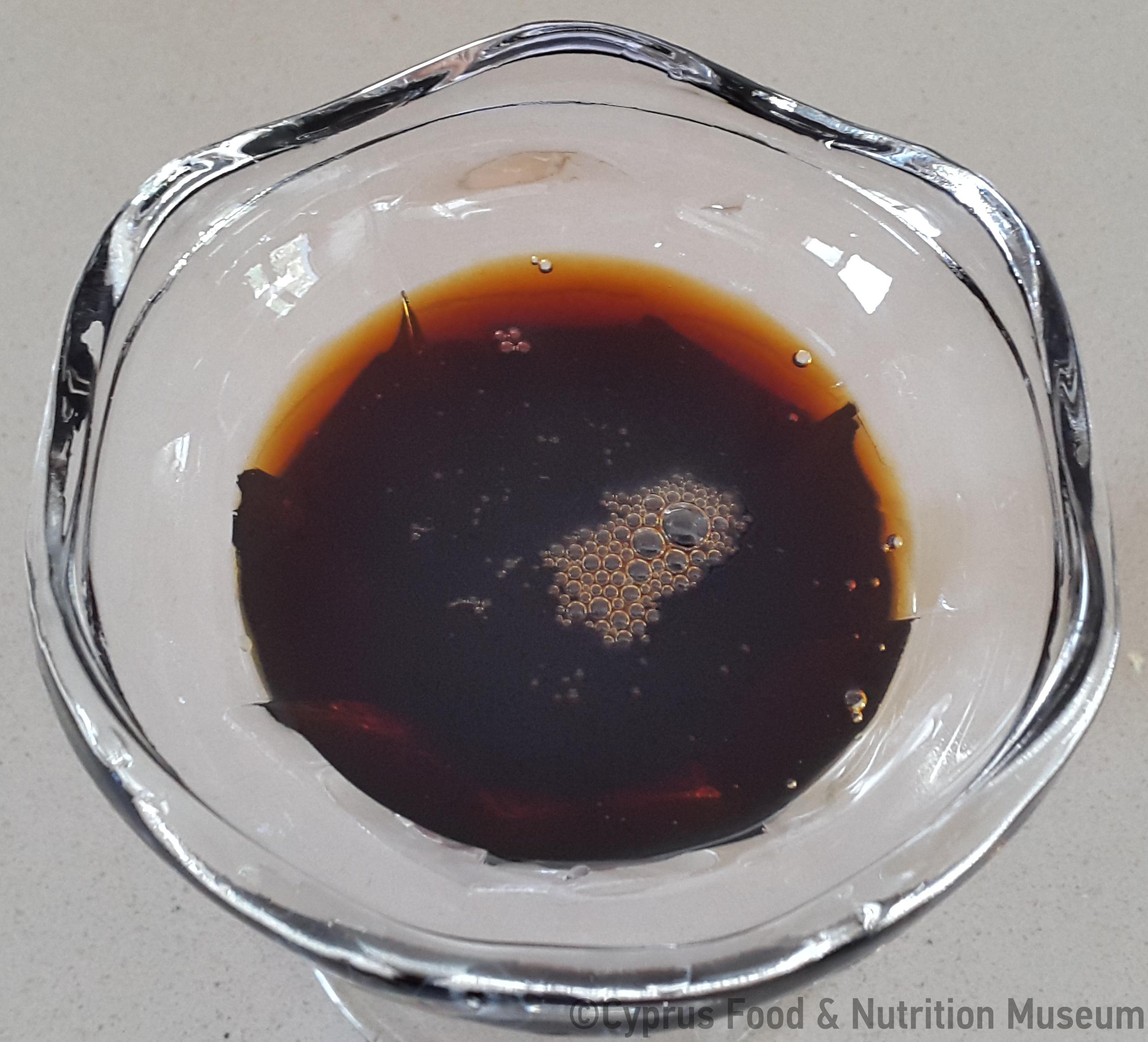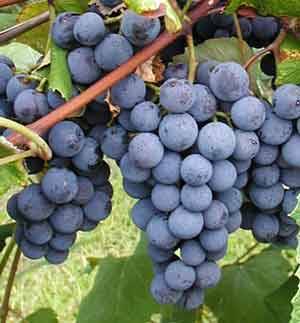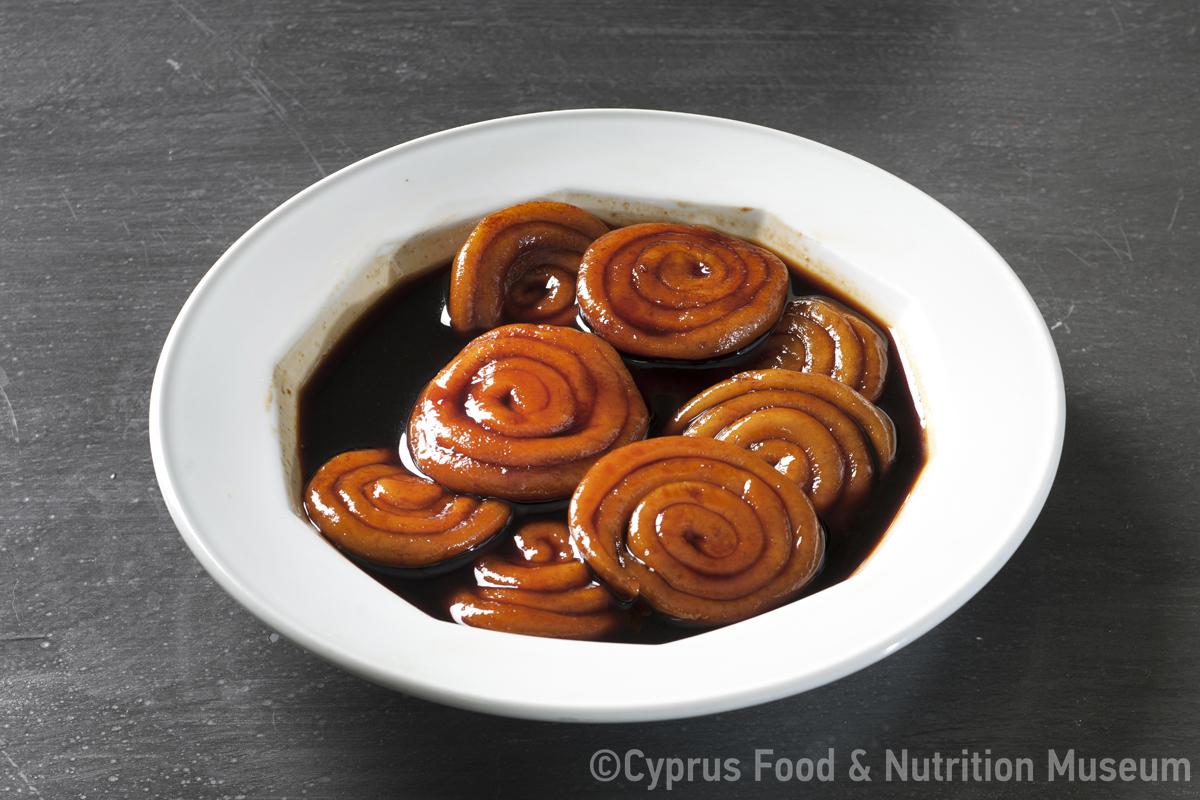Name - Origin
Πετιμέζι.
Νatural syrup from grape must (Kythraiotou 2007, 159) / sweetener from must (Petrou-Poeitou 2013, entry Έψημα, 42)
petimezi < turkish pekmez [pekmez = boiled grape juice] (Petrou-Poeitou 2013, entry Έψημα, 114)
Pekmezin is a Perso-Turkiση word, from pek [pek = very tasty] and mezam [mezam = taste], meaning very tasty. Petmezin is epsiman, i.e. boiled and refined must (Mirianthopoulos 1949, 113).
Konstantinos C. Yangoullis notes in this entry the variants of its name: epsimon and opsiman (Yangoullis 2009, entry έψημαν - έψημον - όψημαν,το, 151).
Epsiman is a natural syrup made by boiling and condensing the must. It "binds" when 1/3 (even 1/4) of the original volume is left in the boiling pot. In the Marathasa region, they flavour it with rose geranium or even basil leaves (Kythraiotou 2013, 47).
Functional and symbolic role
Sireon or epsiman is a delicious natural syrup made from grape must. Until the mid-20th century, it was one of the main sweeteners.
Epsiman was stored in clay (and in later times in glass) containers and kept all year round. It was essential for the winter months and was a key ingredient in the preparation of many sweets, particularly in vine villages, such as:
- grouta
- halvas kouvarkastos, which is prepared with epsima and semolina or flour
- koullourouthkia or tertz̆ellouthkia
- kaikanas, which was common in Pitsilia and was a batter made of flour, water and eggs, fried with diluted epsiman
- souppouthkia, which are small pieces of bread mixed with epsima dissolved in water
- pappous, a ground pourkourin, water and epsima dish.
Rets̆ellia, which some describe as a precursor of spoon sweets, are also related to epsiman (Kythraiotou 2007, 159).
In the region of Marathasa, epsiman was the main sweetener for centuries. It was poured over sweets such as kaikanas, tertz̆ellouthkia or pittes (Kythraiotou 2013, 47).
One of the main products that we find in the elders' testimonies, in terms of the preparation of the foods consumed before and during the hard and long days of agricultural work of sowing and harvesting, is epsima. Pourkourin, was also prepared which they consumed at noon in the fields (Ionas 2001, 63-64, 73-75).
Additional information and bibliography
Yangoullis K. G. (2009), Thesaurus of the Cypriot dialect. Interpretative, Etymological, Phraseological and Nomenclatural Dictionary of the Medieval and Modern Cypriot Dialect, Theopress Publications, Nicosia.
Ionas I. (2001), Τα παραδοσιακά επαγγέλματα της Κύπρου, Publications of the Centre for Scientific Research, XXVII, Nicosia.
Kythraiotou F. (2013), Γαστρονομικός οδηγός Μαραθάσας, Ministry of Education and Culture - Pedagogical Institute, Nicosia.
Mirianthopoulos K. (1949), «Ξενικαί λέξεις εν Κύπρω», Cypriot Studies IB', 113-121.
Petrou-Poeitou E. (2013), Where do they come from. Words and stories from the world of taste, Epiphaniou Publications, Nicosia.
Tonia Ioakim, Ivi Michael / Petroula Hadjittofi, Argyro Xenophontos

